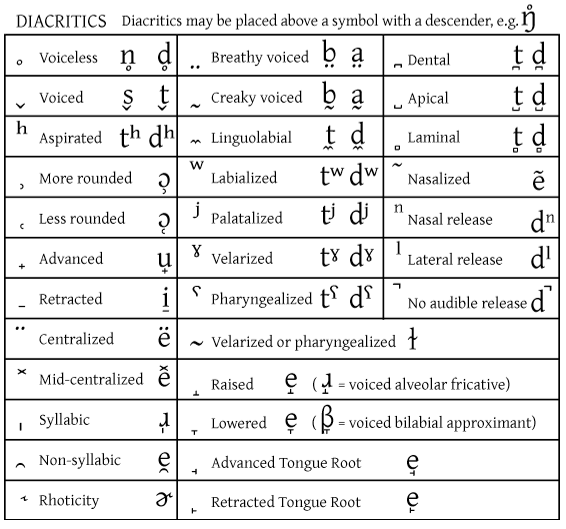Sounding Dutch in Dutch: Consonant Aspiration Posted by Jakob Gibbons on Mar 29, 2016 in Dutch Language
You may have noticed that Dutch sounds kind of weird.
It’s full of these sometimes ridiculous-seeming sounds that you’ve never heard before setting foot in the Netherlands, Even once you’ve gotten your hard g and tongue-cramping diphthongs like eu and ui under control, people can still hear you’re foreign, and it’s because of the phonetic details. This is because what really separates Dutch from some of its linguistic cousins lies in the tiny details of pronunciation, or its phonetics.
When we talked about using the IPA to study foreign language pronunciation on the Language News blog, we pointed out that a language’s speech sounds can be looked at from a phonological perspective, focusing on the distinct individual meaningful sounds of a language, or from a phonetic perspective, which looks at the details of the physical articulation of a sound.
This will be the first of a series of posts hacking pronunciation with phonetics, and we’ll be talking about those nuances of pronunciation that escape all but the most advanced of learners, slipping out of your mouth to declare your foreignness to the natives around you.

The International Phonetics Alphabet (IPA) phonetics chart, used for isolating and studying the kinds of precise details of pronunciation that we’ll be talking about in Dutch. Today is aspiration: linguists use the symbols in the third cell of the left column to indicate aspiration of consonants.
While in general your language learning time is better spent on something like how to use weak verbs, pronunciation can be an especially pressing issue for learners of a language like Dutch, where most native speakers also speak great English and many reflexively (and annoyingly) switch to English when they hear the slightest accent or mistake.
Dutch pronunciation can be confusing and challenging (though it’s not quite as inconvenient as German). When you see all-too-familiar letters like s, n, or k and learn that their pronunciation in Dutch is similar to in English or another language you know, your mind and your tongue fall into the trap of treating them as the same.
But that’s where the devil’s in the details: the way you’re pushing air around in your mouth, tensing your tongue, or shaping your lips for similar sounds across languages is always slightly different, and every native hears it.
So today we’ll focus on one phonetic detail that announces a non-native Dutch speaker like a parade and fireworks: consonant aspiration.
Aspiration, Dutch Consonants, and That Accent
If you aspire to speak like a native, you’re first step should be to cut back on your aspiration.
In phonetics, consonant aspiration refers to the release of air that comes after a stop consonant like k, g, t, d, p, or b. In English it’s all over the place: speak a sentence like “Can I take the car to the park” out loud, and at first you won’t hear it. Try it again while holding a hand close in front of your mouth, and you’ll feel a little burst of air at the beginning of “can”, “take”, “car”, and “park”.
But in Dutch, it doesn’t belong. These six stops in Dutch are distinctly unaspirated, meaning little to no air follows these sounds out of Dutch speakers’ mouths.
“Ik kan twee talen praten” is a good way to inform someone that you speak Dutch, but it’s also a good way to reveal that it’s certainly not your native tongue when you speak it with an English or otherwise aspirated pronunciation.
Trying switching between “Ik kan twee talen praten” and “Can I take the car to the park”, holding the palm of your hand close in front of your mouth and feeling for bursts of air. Feel how the English consonants come popping out in big abrupt bursts, and play with ditching those bursts.
If you pronounce “Can I take the car to the park” in English without aspirating, it’ll sound kind of funny… almost like a Dutch accent?

Dutch Pro Tip: anything you say while gracefully riding an omafiets automatically sounds more Dutch. Image via Pixabay under CC0 (public domain).
The idea is that the k, t, and p in kan, twee, talen, en praten should not be aspirated like their English equivalents. If you feel a little slip of air on the words twee and praten, don’t be discouraged: it should be coming from the second sound in each word, and it should be there, but it shouldn’t be as strong as an aspirated stop in English.
Practice unaspirating your Dutch stop consonants by choking off that little burst of air that your English-speaking mouth reflexively wants to produce. Listen to native Dutch speakers and pay special attention to how their pronunciation of words like kat, top, and prima. Once you can recognize the difference between the native pronunciation and your own, you’re one step closer to sounding Dutch in Dutch yourself!
Are there other sounds in Dutch that are tripping you up? Is your foreign accent accidentally inviting natives to speak English? Tell us what sounds you’d like some help with in the comments below!

Build vocabulary, practice pronunciation, and more with Transparent Language Online. Available anytime, anywhere, on any device.
About the Author: Jakob Gibbons
I write about language and travel on my blog Globalect. I often share my experiences with learning languages on the road, and teaching and learning new speech sounds is my specialty.




Comments:
Jacqueline:
“Ik kan twee talen praten” isn’t good Dutch. The proper way to say something like that is ‘ik spreek twee talen’.
Jakob Gibbons:
@Jacqueline Hmm, okay, it’s not the most idiomatic way to express that idea (I’d sooner just say “ik kan twee talen” or “ik spreek twee talen”), but it seems a bit much to say that it’s bad Dutch, I think. Maybe I could have picked a better example, but this one worked well for the three sounds we were talking about 🙂
Graham:
fascinating detail about the language rarely seen elsewhere. many thanks. 🙂
Bill:
There are a few sounds in Dutch that may be out of my reach. “UI”, it’s almost like I can’t hear anything other than “OW”. “OE” is just “Oooh”. I’m 46, and I guess some things if you haven’t heard them when you are younger can’t be heard/learned.
Jakob Gibbons:
But that’s not the case at all Bill! It may sound a bit corny, but really, language knows no age–you can do it 😉
The ui sound is notorious for tripping up learners, I’ll admit. One of our other bloggers shared a post a while back about her struggle with getting it down, and for her it ended up being mostly a case of practice makes perfect: https://blogs.transparent.com/dutch/the-ui-conundrum/.
For me, my go-to for learning difficult unfamiliar sounds like the ui is studying and practicing with the IPA (International Phonetics Alphabet). There’s a bit of a learning curve, but it’s about the only way I know of to objectively document speech sounds and figure out where you’re falling short in pronouncing them. We wrote a three-part series about this on the Language News blog a while back; here’s part 1: https://blogs.transparent.com/language-news/2015/02/02/hacking-pronunciation-in-any-language-with-the-ipa-part-1-consonants/; and the part particularly on vowels is here: https://blogs.transparent.com/language-news/2015/03/02/hacking-pronunciation-in-any-language-with-the-ipa-part-2-vowels/.
Sounds like we should devote more time on the blog soon to some of these sounds. If you’re still struggling, keep an eye out here for some extra help coming soon 😉
Jan Schoeman:
I want to say in Dutch. “Teacher the children absent from school are busy draaien stokjes” It is derived from an idiom in Afrikaans which means children are absent without permission from school because it was an excuse used to help their parents inoculate vines.
Trudy:
I want to have you include me on your mailing list please.